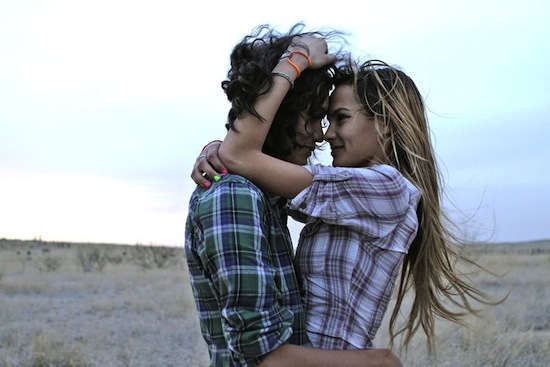Larry Clark (Kids, Ken Park) works best when he is forced to stick to a pretty strict narrative track. Bully, by far and away Clark’s best film to date (and sadly the only one worth serious attention), benefits from its rigid adherence to David McKenna’s screen translation of Jim Schutze’s book Bully: A True Story of High School Revenge – which is in turn based on events surrounding the real life killing of high schooler Bobby Kent in early 1990’s Southern Florida.
Within Bully, Clark is forced into hitting specific events and running in the predetermined groove of an A-B-C plot progression. Such elements are noticeably absent in his other films. When he operates within such a framework, it is clear that Clark can strike a lucid balance between documentary realism and terrifyingly absurdist black comedy. It’s a real shame therefore that Bully is Clark’s diamond in the rough, bookended on both sides by films that are too often self indulgent, unfocused and occasionally quite repugnant. It seems that when Clark has free reign over where to take his films (structurally and thematically) he too often defaults to, and lingers on, the same grating scenarios and troublesome images, all at the sacrifice of a compelling narrative.
Marfa Girl is no exception to the rule, packed to the rafters with swirling images of young teenage bodies in various states of undress and stimulation. These aspects have earned Clark a reputation as an off key ‘Fagin figure’ in the US indie scene – and as he grows older his characters and cinematic preoccupations stay, tiresomely and predictably, the same.
Marfa Girl follows Texan teenager Adam (Adam Mediano) as he stumbles through a variety of Clark-staple sexual encounters – most of which serve only as self-encapsulated moments of dull spectacle, ultimately only distracting from the otherwise barest of narratives. I’m certainly not suggesting that films can’t remain captivating and emotionally enrapturing without a concrete narrative – within post-War European Art Cinema plotlessness was the director’s meat and potatoes, with filmmakers such as Antonioni, Tarkovsky, Akerman et al. exploring themes such as existential doubt, loss and alienation via non-linear narratives.
The compression of narrative events and solid causality became crucial tools in such thematic explorations. However, when narrative is pushed to the sidelines, concepts, ideas and themes must still develop that allow us as viewers to understand what the film is signifying and pushing us to comprehend. Sadly for Clark he leaves us in the dark, time and again, reducing narrative simply for the sake of repeated sexual observation – exchanges which are delivered in such flat monotone slabs by Clark’s performers that they almost repel any emotional involvement from the viewer.
The first such encounter occurs when Adam falls asleep in class, resulting in a sadomasochistic paddling from his domineering teacher (Lindsay Jones). This scene forms the first significant dialogue interchange between two characters, and what initially might appear to be some kind of Brechtian anti-naturalist interaction quickly descends into a case of pure bad acting. It is within scenes like this that Clark’s predilection for improvisation really falters. Many of his performers, mostly non-actors, cannot hold the scene together and we become aware all too quickly of their performative weaknesses, thus throwing us outside the filmic world. Bresson performed such acts of deconstruction for all the right reasons, Clark does for all the wrong ones.
The film remains on an emotional plateau throughout. Inserted sequences of birds develop no deeper significance, episodes of drug taking seem increasingly farcical, the sexual encounters become routinised, our clock watching peaks, then finally it’s over, nothing learnt, nothing gained.


